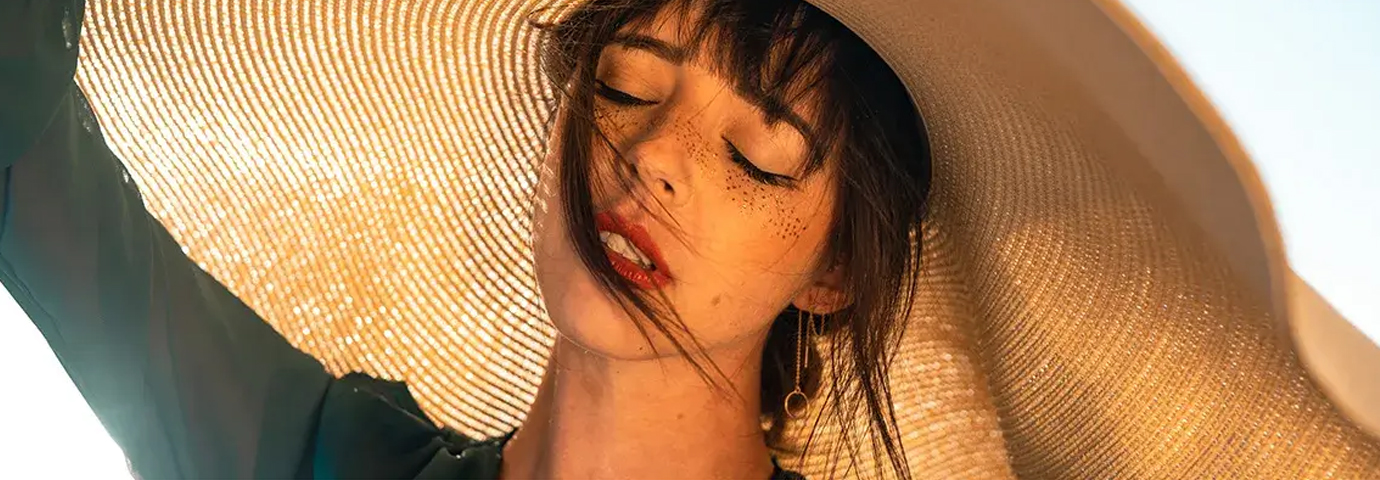How to protect your skin in the sun

How to protect your skin in the sun
With the summer in full swing and more beach days, barbeques, and days outside, protecting your skin and health is paramount. Without the proper protection, too much sun can cause sunburn, damage the skin and lead to premature aging. As well as the soreness and discomfort that comes from sunburn, strong UVA and UVB rays can cause wrinkles, sunspots and your skin can appear ‘leathered’ and look older. So, what can you do to continue having fun in the sun but ensure your skin is protected? Our skin researchers provide six tips for shielding your skin and keeping sun safe.
1. Wear sunscreen with 15 SPF
Sunscreen should be your best friend when it comes to enjoying the sun. A big misconception about wearing SPF is you don’t need to apply it when it’s cloudy. This is not true. The rays from the sun can still harm our skin through the clouds. When looking for a sunscreen, check the label that it offers both UVA and UVB protection with an SPF of 15. Our skin researchers recommend reapplying sunscreen every 1-2 hours including after swimming. Remember, sunburn can put you at greater risk from premature ageing including wrinkles, sunspots, and loss of skin elasticity. So, the more you protect it, the healthier your skin will look.
2. Protect from the inside
Increase your intake of phytonutrients including fruits and vegetables, this has been shown to help skin health. There is research that Lycopene found in tomatoes can help prevent redness after UV exposure [2].
3. Wear cover ups
In addition to sunscreen, wearing the right clothing will go a long way to protecting your skin. Opting for clothes with long sleeves and darker colours is ideal for keeping your skin safe. If you’re by the beach or swimming pool, dry clothes offer better protection than wet clothes, so keep a spare set of clothes with you just in case. You can also look for clothes that have SPF on the label for extra precaution.
4. Seek shade during peak times
The sun is at its strongest during 10:00am - 3:00pm, so it’s best to keep out of it during this time and opt to stay in the shade. If this isn’t possible, safeguard your skin from the sun with cover ups and make time for breaks when you get too hot. As well as sunburn, too much sun can also cause heat rash, dehydration, and sunstroke so it’s important to seek shade as much as possible.
5. Wear sunglasses that filter the rays
Sunglasses are more than just looking stylish; they help filter the UV rays from your eyes. Eyes are extremely sensitive to the sun, so wearing good quality sunglasses is a must for eye health and preventing premature ageing. Top tip: check the label on the sunglasses for the UV rating before you purchase. The sun can not only damage the skin but the cornea, lens, and other areas of the eye as well [1] so sunglasses are the best way to keep them covered.
6. Wear a hat
A scaly and sore scalp sound familiar? This can be the result from not protecting your scalp. Hats are often very underrated when it comes to sun protection. They not only reduce exposure to your head but your face too. We recommend a hat with a wide brim for optimum sun defence and adding it to your bag of summer essentials.
7. Stay hydrated
The heat causes us to sweat, which means you lose a lot more fluid. Drink water throughout the day and don’t wait until you’re thirsty. A good indicator is the colour of your urine – if you have dark urine, you may be dehydrated. Avoid sugary drinks and excess alcohol as this will dehydrate you further. Dehydration can lead to fatigue, dizziness, dry mouth, and dry skin. With these tips in mind, you can of course still enjoy the sunshine, just remember to keep applying your SPF, wear protective clothing including sunglasses and a hat and stay hydrated to avoid dehydration. Incorporating these habits will prevent your skin from showing signs of ageing and help promote a youthful, radiant complexion.
Sources: Skin cancer. Mayo Clinic. December 2020. Tomatoes protect against development of UV-induced keratinocyte carcinoma via metabolomic alterations. National Library of Medicine. Cooperstone. Jessica. Tober Kathleen. Riedl. Ken. Teegarden Matthew. Cicho. Morgan. Francis. David. Schwartz. Steven. Oberyszyn. Tatiana. July 2017.
